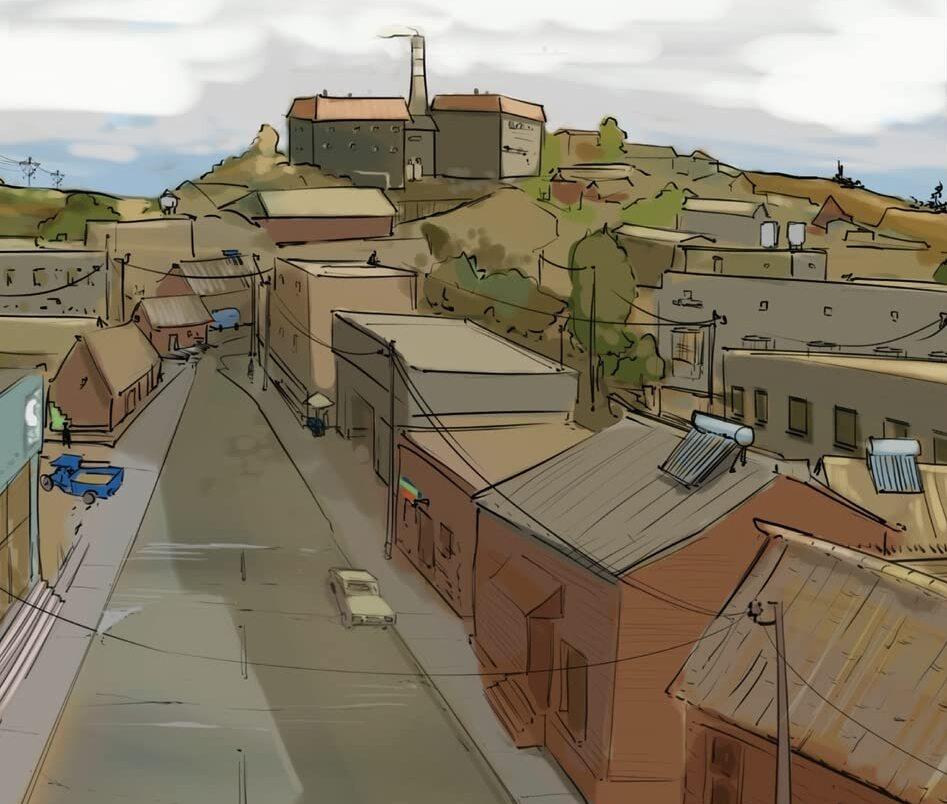
White Faced Lies by Eric Flanagan
My rating: 3 of 5 stars
An interesting project. ‘White Faced Lies’ follows the journey of two ‘face jobbers’ in China. Face jobbers are foreigners who get paid to stand around and just look – well foreign – ideally American, white, tall, good-looking, and with blond hair. It is also known as having a white monkey job. You might, for example, be hired to attend a business banquet as a representative of a company you don’t actually work for. But your presence gives the company prestige – ‘Hey look we have a foreign employee!’ I don’t think this happens much in 2022. The book is set in 2010.
Stan has been in China for a decade doing face jobs. He is a caricature of the white middle-aged male villain of our times. Along for the ride is Jared a naive young American who believes Stan is his dad. The two of them drive around China doing different gigs. Their face jobs include being judges at a golf tournament and posing as doctors.
In the illustrations, some of the details are definitely on point, such as the Communist Party slogan above a urinal imploring civilised conduct. The creators of this book have spent a long time in China and know it well. In getting the small things right, White Face Lies compares favourably with the only other graphic novel I’ve read about the Western experience in China, Guy Delisle’s ‘Shenzhen’. The problem with Delisle’s book is whenever there is a speech bubble of someone speaking in Mandarin it is filled with Chinese characters that make no sense. Delisle obviously didn’t consult a Chinese speaker – the characters are just there to show the incomprehensibility of the Chinese language. In White Faced Lies, the red font shows speech translated from Chinese. This works but it added to my feeling the book doesn’t capture the atmosphere of China. Delisle’s black and white drawings neatly recreate the overall feel of Shenzhen in 1997, its crowds, industry, construction and restaurants. This is lacking in White Faced Lies. A lot of the panels are of the two Americans in a car or hotel room. When they are on the road, I can see an attempt has been made to show the cityscapes and countryside of China. But, either because of the bright colours or the choice of what to show in the limited space a graphic novel necessitates, it hasn’t worked. Making up for this the story itself is well put together. There is humour and the plot is tight.

Stan is not a 100% villainous white man. This was the problem with Quincy Carroll’s otherwise excellent novel about English teachers in China, ‘Up to the Mountains and Down to the Countryside.’ His villain Thomas, an alcoholic middle-aged English teacher, is completely rotten. For me, having a nuanced villain is important. Most foreign losers in China have some redeeming features and are exploited as much or more than they exploit others. Stan has been damaged by the death of his daughter in America. He is callous towards Jared, but not without empathy for the younger man’s pain. Despite being in China for a decade, Stan is totally unadapted and uses a set of cards with Chinese phrases to communicate the simplest things like ordering dinner. Imagine if a Chinese person in America held up a card with the words ‘fish and chips’ when the waiter came to take his order. Maybe it wouldn’t be a big deal. In any case, this rang true. I’ve seen foreigners resident in China for years not able to tell the taxi driver to turn left or right. (They are known as losers – but only in mainland China, if you can’t say left and right in Cantonese despite living in Hong Kong for twenty years it’s OK. This is a strange phenomenon that I won’t elaborate on here.)
The subplot of the Chinese factory worker whose brother died from drinking tainted soda brought the bigger picture of corruption and health and safety in China into play. But for a tale of a bumbling foreigner in China that intertwines bigger issues about rich and poor, pirated products, Sino-American relations, and culture shock into the narrative I recommend Tom Carter’s ‘An American Bum in China.’ That said, check this book out – it’s great to see this kind of issue being tackled in a graphic novel.
View all my reviews
